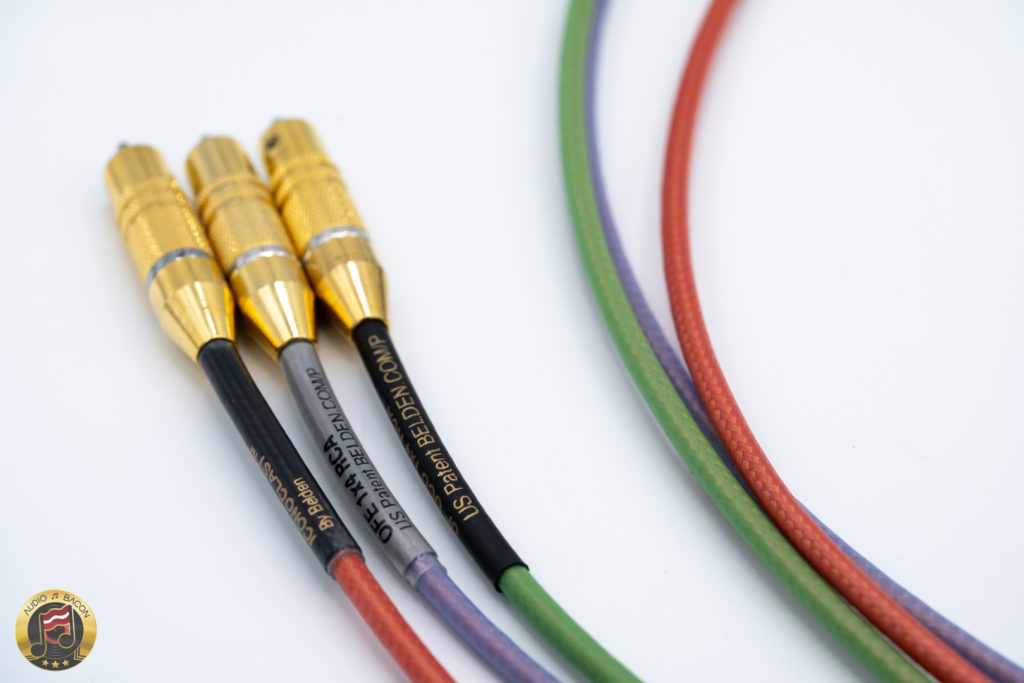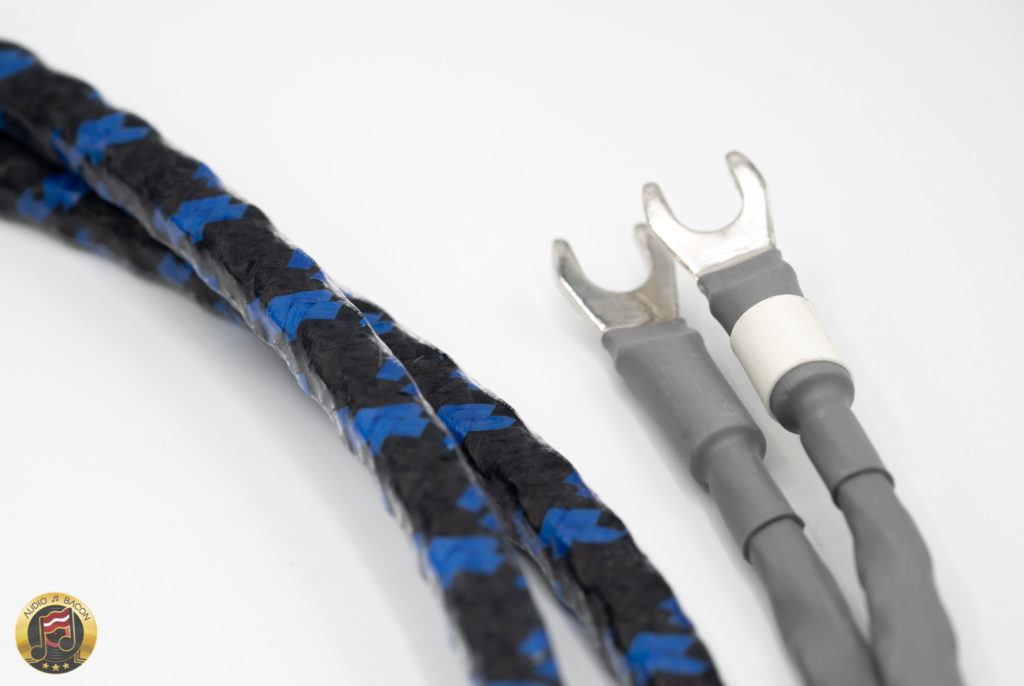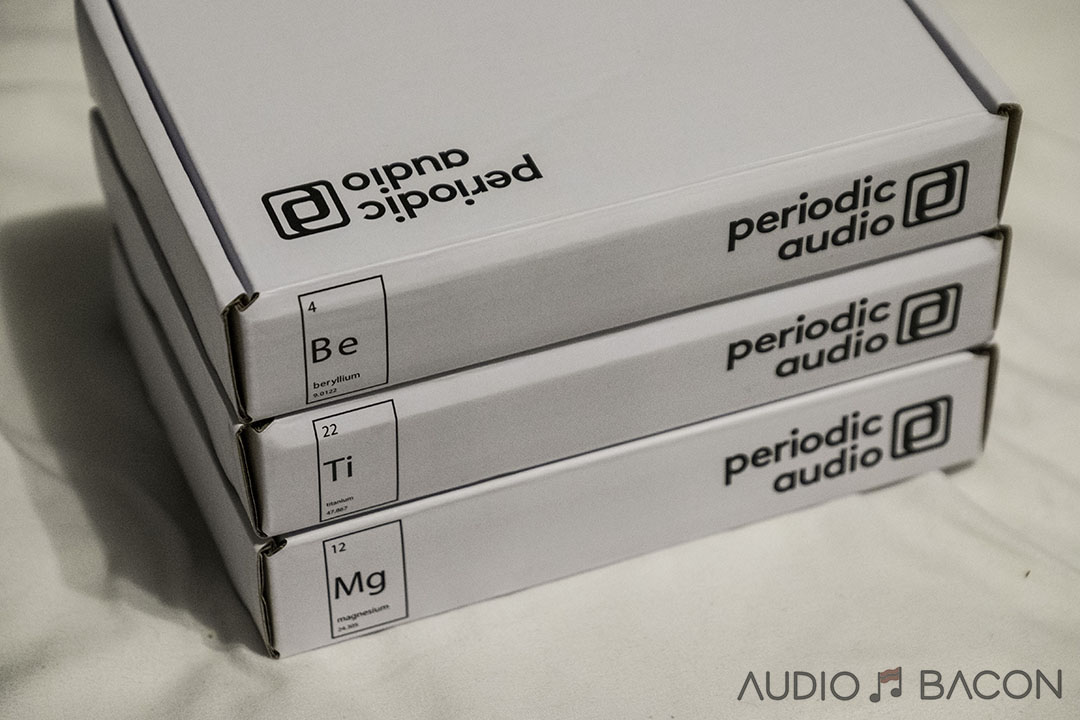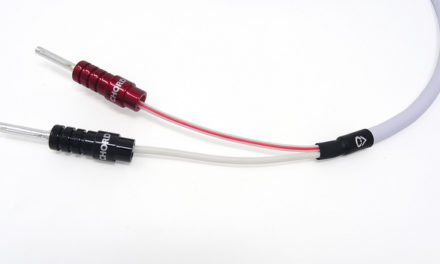Listening Tests
Contents
Setup:
- Source
- Chord Electronics DAVE
- Chord Electronics Hugo M Scaler
- Ampflication
- Chord Electronics TToby
- Emerald Physics 100.2 SE V2
- Speakers
- ATC SCM7 V3 loudspeakers
- JL Audio F110 V2 subwoofer

Iconoclast 4×4 “Gen 2” XLR Cables
| ETPC | A very open, insightful, and spacious sound. The top-end has wonderful vibrancy and sparkle. It’s a leaner but airier sound. Many will enjoy the resolution, blacker background, and spatial clarity of this cable. It “breathes out” more over the other cables in the lineup. |
| OFE | Immediately fuller and tonally denser than the ETPC. It’s slightly warmer but much meatier. It has a smoothness and coherence that isn’t as obvious with the ETPC. The treble is tame and doesn’t ring out as vividly as both the ETPC or UPOCC. I do feel the tonal accuracy to be better than the ETPC – but many will prefer the soundstage and sweeter highs of the ETPC. |
| UPOCC | This cable is in a league of its own. It’s not simply a combination of the ETPC or OFE. Not even close. It has the most accurate and natural timbre of any XLR cable I’ve heard so far. It delineates, soundstages, shines and provides tonal variations to dream of. The other two cables sound a bit “grayscale” in comparison. At more than double the price of the other variants – I would still save my pennies for this one. |

Iconoclast 1×4 “Gen 2” RCA Cables
| ETPC | The ETPC is very similar to the sound of the XLR variant – perhaps at a lesser degree of brilliance. Obviously, this could also be due to the output stage of the DAVE. It has a bit more body but it takes over a more crystalline sound. For example, Snoop Dogg sounds a little “tonally clean” for my tastes but cymbals and cellos sound fantastic. The soundstage off Lady of Spain – Ray Conniff was large and immersive. |
| OFE | Transients are better defined with the ETPC – but the OFE has much better tangibility. The ETPC sounds a bit elevated in comparison. The OFE imparts more gravitas and weight to the sound. More meat on the bones. It’s definitely not as detailed or spatial as the ETPC but Snoop Dogg now has the proper aggression. It just molds the sound better but doesn’t quite have the lifelike details of the ETPC. |
| UPOCC | I think this copper should be used for all analog cables. It’s undoubtedly the most natural sounding conductor out of the bunch. It has the right color, energy, and body. And it doesn’t seem to sacrifice much at all. There’s clarity, soundstage, bass definition, and perfect timbre. All performers sound more healthy and alive. The aural gradations in organs, violins, and Kodo drums are in plain view. It just sounds like the UPOCC paints with a more colorful palette. |

Iconoclast Speaker Cables
| SPT PC | The SPTPC is quieter and outlines better than the OFE. It’s not sharp or edgy at all. It’s just a cleaner and clearer sound. It also has more depth than the OFE. The SPTPC lighter, faster, and creates a larger atmosphere. Imaging and focus are also very precise. |
| OFE | This cable has more tonal variations over the SPTPC. It has a warmer more organic color – which to my ears, sounds more convincing. In fact, it’s one of the more natural sounding speaker cables I’ve ever heard. It layers and isolates instruments very well. It’s a clear – but not overly clean sound. In short, it just sounds unimpeded in dynamics and clarity. It sounds great with all genres of music. The OFE is my personal preference. |








Why did you not include ETPC speaker cable??
I am receiving all 3 for evaluation this week and am curious if you deemed ETPC not competitive.
Thanks,
Good review Jay. Just curious, in addition to the DAVE, did you try balanced vs single-ended out of the Chord Hugo TT2? Have a preference?
Thanks,
Scott
Single ended seems to offer more clarity and air but balanced puts more meat and warmth on the bones.
Hi Jay,
I am especially interested in the Iconoclast 4×4 “Gen 2” XLR Cables.
You described the ETPC as “The top-end has wonderful vibrancy and sparkle”.
You described the OFE as “The treble is tame and doesn’t ring out as vividly as both the ETPC or UPOCC. I do feel the tonal accuracy to be better than the ETPC – but many will prefer the soundstage and sweeter highs of the ETPC.”.
I am a bit confused with your terminology: In my search to eliminate the small harshness I still perceive in the highs, I made many changes to my sound system over the years (replacing DAC, amplifier, speakers, cables, added Innuos music server).
Each changes brought improvements in clarifying/cleaning the highs, i.e. trying to get sweet natural non-overbearing highs.
In my vocabulary, sweet highs do not equate vibrant or sparkling highs: the last thing I want to do in to accentuate the highs.
In fact, to me, vibrant or sparkling highs better describe the digital harshness I keep hearing with DACs: this kind of excessive energy in the highs that causes listening fatigue over prolonged listening period.
So, given my vocabulary, it would seem to me that the OFE tamed treble would provide me with the sweet natural non-overbearing highs I am looking for versus the ETPC, i.e. the OFE seems like the best choice to reduce the digital harness in the highs (my DAC is a PS Audio Directstream Senior and the harness in the highs is heard mostly in Choral music).
Would you concur that in my situation, the OFE would be a better choice?